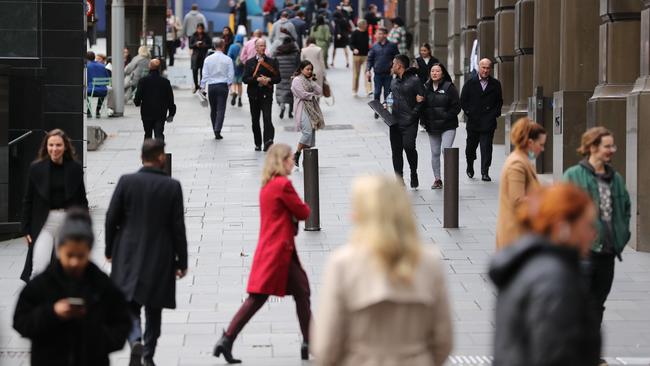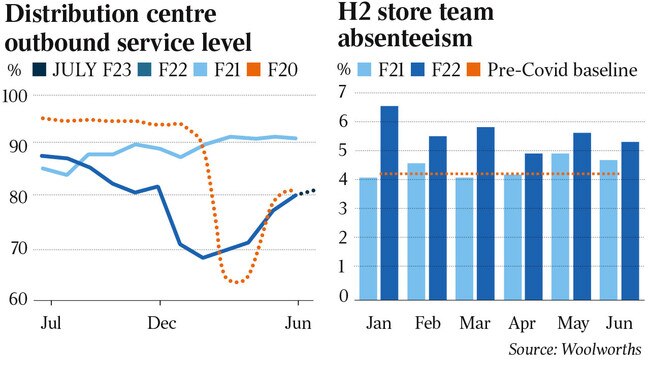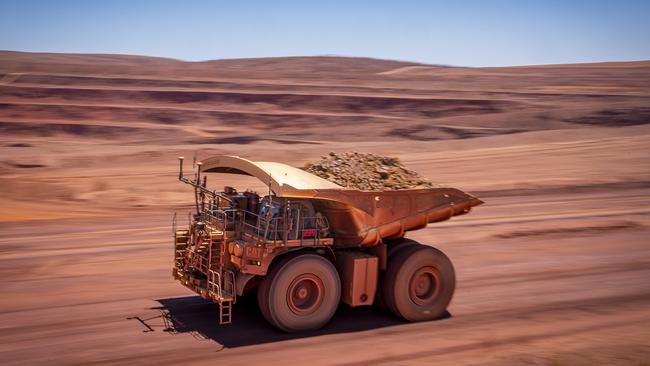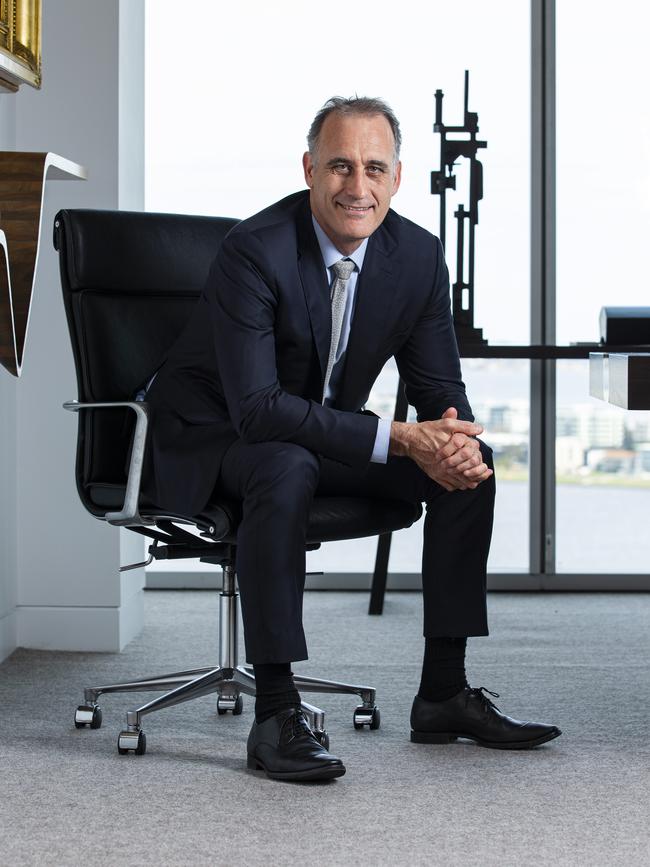
“Are staff taking a sickie whenever and it’s accepted now? Is this the new normal?”
The question by Bank of America retail analyst David Errington crystallised what some executives have been privately wondering when they see large chunks of their workforce unavailable as Covid cases have coincided with a surge in influenza. It has a serious undertone, with Covid-linked absences now turning into a productivity issue and little relief in sight until the virus flames out.

By no means is Woolworths alone or an outlier; companies including BHP, Qantas, Telstra and rival Coles have experienced a winter surge of Covid absenteeism, with sick leave in the past six months hitting harder than previous pandemic years. The absenteeism levels are holding up even into August – a new, long tail of the Covid pandemic.
So far the Australian winter has featured a double peak of seasonal influenza and Covid-19 infections, with nearly six million cases since March 2022.
Hardest hit are companies where staff are customer-facing or required to be at the workplace. This can be a building site, an aeroplane, a kitchen, mine or manufacturing facility. Absenteeism is also causing massive disruption to the operating rhythm of business as projects stop and start. Collectively it’s costing Australia billions of dollars.

The nationwide easing of close contact rules in April gave some relief, but it coincided with daily case numbers also rising. Existing state and federal health orders require Covid patients to be isolated for seven days. Close or household contacts no longer have to isolate if they return negative tests but there are some mask and sector-specific restrictions. But it is the seven-day rule which is expected to be in focus if case numbers remain at current levels, with Europe now requiring just five days of isolation if Covid-19-infected people return a negative RAT or PCR test. Britain moved to a five-day recommendation earlier this year, and removed the self-isolation requirement to avoid others until you no longer feel unwell.
From hundreds of profit briefings in recent weeks it’s clear companies of all sizes have supported their sick staff. But chief executives widely acknowledge that it represents one of the biggest logistical challenges the economy is facing.
High absences have been pushing into the new financial year and are compounding supply shortages and ultimately feeding into a higher cost of living. And for companies managing white collar workforces that are working from home, it adds another layer of complexity.
On average Woolworths is still seeing fewer trucks leaving its massive warehouses than in any period over the past three years, with productivity levels expected to stay below long-term average rates in coming months.

Across all of Woolworths on average 5.3 per cent of their staff were absent or unavailable daily during June, which was almost as the same as the levels reached in February this year. In raw numbers for a company the size of Woolworths that’s nearly 10,000 staff a day. The absenteeism rates are persistently higher than last year, and staff costs due to Covid absenteeism represent $109m in the year to end June. Woolworths CEO Brad Banducci says he is seeing some improvements in the “trend lines”, with numbers below the peak of December, when absenteeism rates across some Woolworths warehouses were running at 30 per cent. Today absenteeism is closer to 15 per cent at the retailer’s warehouses.
“There are moments when you still have challenges and it reminds you of the fragility that’s out there,” Banducci says. He is hoping that by October Woolworths will be past the worst of it, which will get the retailer in a stronger position for Christmas. Even so, he is not being complacent. Woolworths is ramping up hiring of staff numbers to deepen its pool of workers. It is also putting more casual staff on the books to improve flexibility for rosters.
Qantas boss Alan Joyce admits his airline was caught out by the isolation requirements and the record levels of sick leave that followed, just as travel started to quickly rebound. At one point Qantas had 300 pilots per day on sick leave or in isolation.
This wasn’t limited to Qantas but went right across the aviation sector, with knock-on effects for air traffic controllers and airport ground staff which affected the ability of planes to take off or arrive on time.

“What we weren’t ready for – after 18 months of Covid-19 being suppressed – was such high levels of community transmission and the sick leave that followed,” Joyce says.
Coles boss Steven Cain says absenteeism rates have passed their peak, but he is still seeing levels more elevated than normal.
Covid-linked costs, mostly on the back of sick leave, are running at about $7m a month for Coles.
“Hopefully as we enter the spring period the flu will abate and maybe Covid as well,” Cain says.
While executives are hopeful Australia is past its winter peak, they are quietly fearful that, like last summer, the coming northern hemisphere winter could bring yet another wave of worker infections with a new Covid variant.
Last summer’s Omicron breakout in Australia represented the peak period for Covid-19 absenteeism, as daily case numbers pushed into the tens of thousands.
Meanwhile, two mining companies – Fortescue and Mineral Resources – are scheduled to deliver earnings updates on Monday, and are expected to highlight Covid absenteeism hurting their output.

This follows BHP and Rio Tinto both confirming that output was affected by a recent spike in Covid-19 cases, particularly in Western Australia.
Rio has seen mine development costs blow out by hundreds of millions both here and across its global operations, where Covid keeps workers at bay.
Significantly the labour shortage has forced the company to elevate safety risk settings to ensure its workplaces remain safe for workers.
Elsewhere, Melbourne-based trucking major K&S says a “significant” number of employees had been required to isolate in recent months, resulting in driver shortages where trucks were left at the depot.
K&S says the problem appears likely to persist into the current financial year.
Listed crash repair group AMA is another closely tracking absenteeism among its specialist workforce.
While absenteeism has fallen in recent weeks, it remains well above pre-Covid levels, which affects AMA’s ability to repair cars and ultimately impacts sales.
Productivity puzzle
Wesfarmers boss Rob Scott is among dozens of CEOs planning to attend the Jobs and Skills Summit, where productivity challenges will be discussed on the opening day.
Scott oversees a workforce of more than 120,000, spanning retail, manufacturing, mining and healthcare.
He says the fact that unemployment is running near 50-year lows makes the summit even more important.

He believes there is a risk that Australia might be undercutting its future growth by allowing a tight labour market to simply push up wages without any link to productivity.
“Historically low unemployment is a real burning platform to get enterprise agreement processes that work again, to unlock productivity which is then going to lead to higher wages,” Scott said.
“We need to take advantage of every opportunity we have to unlock productivity. In practical terms in businesses, that means that we need to invest in more productivity-enhancing technology.
“It means we need to work with our teams to find new ways of working and more efficient ways of working.”
Scott says the need for a more productive Australia is a strong argument against collective bargaining or industry-specific workplace agreements.
Rather gains can only be “unlocked through enterprise agreements that are company-specific”, Scott says.




About a third of the way through a briefing with investors last week, Woolworths chief executive Brad Banducci was asked about persistently high sick leave across his supermarket chain.